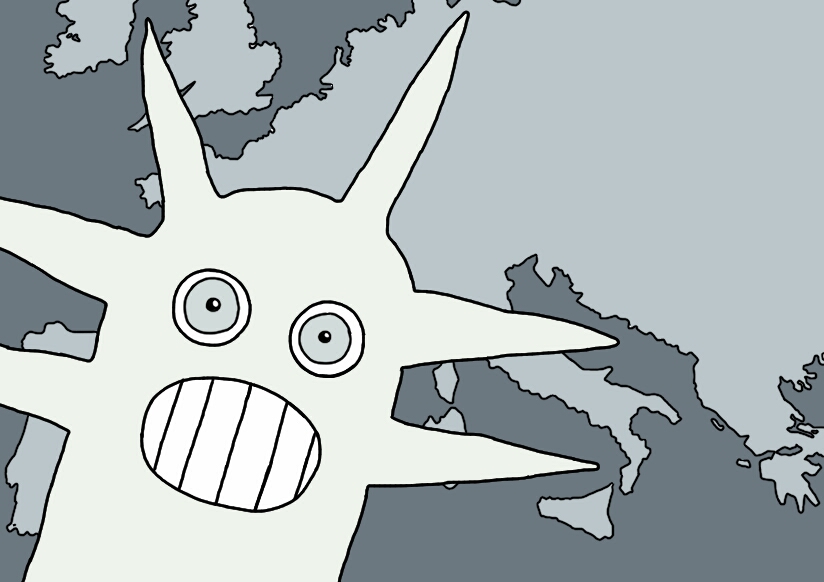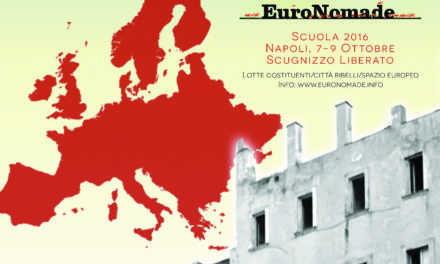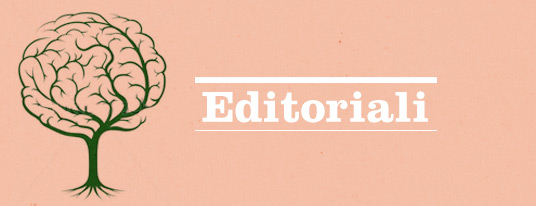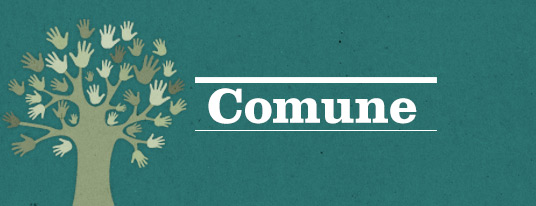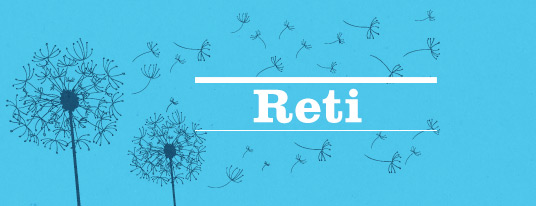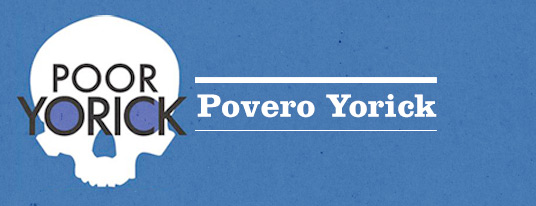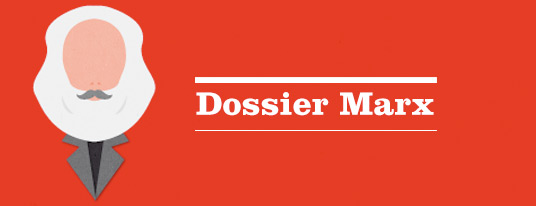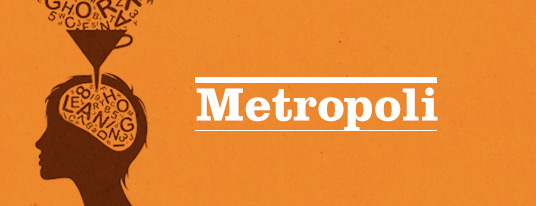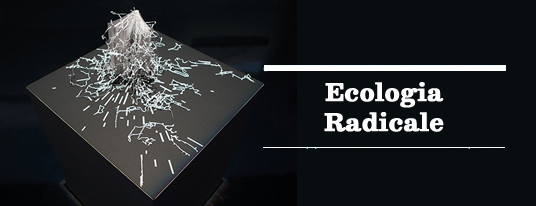ANTONIO NEGRI and RAÚL SÁNCHEZ CEDILLO.
The comrades who have given life to Podemos say: we have managed to move past the limits of the horizontality of the movement, so rich yet often ineffective. We managed to do this with a political gesture of self-constitution, organization and representation. We had the intelligence to understand that the space between the municipal and the general elections, between May and the end of the year, was our only chance to “break the lock of ’78”: during election periods the adversary is forced to spread out into the territory; constitutional guarantees work better than under other conditions and thus become possible zones of rupture of the current regime, so deeply discredited and divided. Moreover, at the end of 2015 the capitalist front will perhaps be busy preparing its attack, regrouping after having responded to, and possibly demolished, viciously, our resistance. Such would the historic window of opportunity again be closed for a long time.
All this we concede. The comrades of Podemos are the only ones in Europe who have seriously dared to take this step and construct a vertical axis from a movement of a new potentiality and unprecedented power, organizing without demagoguery or subterfuge a pathway out of grassroots democracy — ultimately powerless in face of that which the times demand, in the contemplation of its horizontality. Only the Baron Munchausen was able to boast saving himself from drowning by pulling on his own hair until he could fly… Now Podemos has managed to do the same.
But in order to keep winning it is necessary to think not only about how to defeat, dismantle and make the adversary lose all political and constitutional weight. It must be assured that whatever is done in this direction is done at the same majoritarian and radically democratic scale of which it was born. In this process there can be no bottlenecks, neither of spatial nor temporal nature. Just one example: the Italian Communist Party, to which the theorists of Podemos often refer, lost all its strength, as well as its hair, and was captured by the enemy when it forgot the maxim: that narrow strait was called “autonomy of the political.”
It does not take long for the bottleneck to turn into a noose that catches everyone who sticks in a finger — or a neck. In this sense, the critique of the political party made by political scientists for over a century is more than clear, not only about the limits of the bureaucratization of the party structure (such theorists have insisted on this, denouncing, as the men of the right that they were, the nascent strength of the workers’ parties) but, above all, about the characteristics of the power of command, of direction, of leadership and of the ‘charismatic’ that the autonomy of the political determines. It was the correct analysis of a tendency, just as it was a threat (one more among another thousand, but particularly apt) that added to the struggle of those political scientists against the parties of the proletariat.
So far we have stayed within the limits we have called “spatial.” Then, there are those that are “temporal,” linked to the “autonomy of the political.” We certainly do not consider ourselves to be among those who deny the possibility of using times of crisis in the best way, be they electoral or social; nor among those who deny the necessity of hitting at the weak point in the chain of the power of command, especially if it can be done at the moment when the forces of the social protest of the citizens are strongest. But be careful: it is not easy to practice government. It is not something one can do alone. All the more so in the current regimes of governance, where the continuity of action must not only be maintained over a long temporal cycle, but is also made up of a series of actions at specific moments. It is about the ability of the adversary (the national-popular right and/or “PPSOE,” nationalist projects of Catalan capital, the global and European Troika, etc.) of fragmenting the counterattack indefinitely. Against this adversary and in this temporal dimension, to “be within” the movements is essential for the action of a government conquered by Podemos.
The Bolivian comrades understood this perfectly when they managed to create a situation in which government and constituent assembly coexisted over a long period of time. It was a commotion — but it emanated strength and vitality.
The problem of government “in time” is not only its efficacy, but also the irreversibility of its conquests. Whoever flirts with the “autonomy of the political” will end up thinking that the development of grassroots democracy is secondary. Occasionally they will even imagine forms of power of command whose efficacy is purely charismatic: tragically, this is what sometimes happens. But it is not the case for us: we are working to exit definitively the Weberian dilemmas of the bourgeois power of command, which until now have only legitimized authoritarian solutions to social conflicts that the struggles had raised to the height of the political.
But let us return to the central problem we are addressing: from horizontality to verticality; from the agitation and resistance of movement to government. Podemos asks that all comrades think in terms of this level. A level of central government? Maybe. The level of city government? This seems more proximate and possible. But is it not true that only if the action of all citizens is directed towards a powerful renewal of city government, only in this case, will it be possible to make a tangible, local example of an effective constituent project? We think so. Because the city and the municipality, the life of the city and its forms of encounter can shape solid figures of administration and constituent initiative. The camps in the metropolises, in the cities and even in the small towns were a form of constituent encounter, demonstrating that metropolitan ways of life are now political and productive in general terms. Making democracy and (re)production of the city interact, we have the possibility to articulate the political, that is, to connect the will to win and the capacity of decision to a broad, plural and active fabric of militant presences and the production of programs of transformation. The political is played in the middle of all of this. This is where the Foucauldian question “how we want to be governed” becomes flesh.
And above all, from here, from the metropolitan and municipal administrations, the possibility arises of constructing a government at the state level, brick by brick. In a biopolitical regime (i.e., in a regime where power of command, life, production, affects and communication are intertwined and meshed as in a maze), jumps are difficult if not impossible — in the old politics, things were like this, too, and when there were jumps, sometimes heroic, it was almost always necessary to retreat, covering in cunning institutions a terrain too hastily crossed.
To verticalize horizontality does not only mean to conquer capabilities of general decision, of government, of management of a “war of movements,” but also and above all to elevate oneself to a broader vision from above, and this is when it becomes clear that the war of movements is not worth it if the conquered positions, the defended fronts are not maintained, consolidating and developing themselves gradually.
The government must guarantee the power of the citizens’ organizations — so it was said not long ago in Latin America, while the progressive movement was winning — because only then is the central government protected from sudden and/or organized upsets. By whom? We can answer: no longer only by the adversary we know, by the reactionary forces we are confronting, but also by a much stronger hierarchy that across Europe reaches up to the cusps of the government of financial capital.
The recognition that people are not afraid and that these forces can be beat is crucial. But we must be careful to not tempt the devil that could still emerge from the depth of the confrontation. Our strength will continue to be the camps, the municipalities, the mareas, the movements — in other words, what 15M has made possible and practicable. Sometimes we have the impression that for the promoters of Podemos “power” is a separate dimension. This is not true: it is a heightening of the ability to act, it is a perspective of action around and in political relations, but “power” and the “political” do not exist. There are only multiple and distinct degrees of counter-power. But almost all of the leaders of Podemos repeat, inside and outside of the organization, the same line: “first we take power, then we apply your program.”
The “autonomy of the political” can turn into a pernicious theory if, overestimating the institution and the efficacy of state power, it denies the material origin and legitimacy of the foundation of the political. The representation that separates the representatives from the represented, the “general will” (called the “people” or “popular unity”) that creates a mystical and unquestionable foundation of the representatives is not what interests the movements, no. What matters is (re)creating a flow of political movement, an open system of governance from below that holds together — through continuous constituent debate and the constant extension of this debate to the citizens — movement and government. It is possible to build this bridge, this coming-together — if all give in to the necessity that is called “being majority.” This is the empowerment that is decisive.

